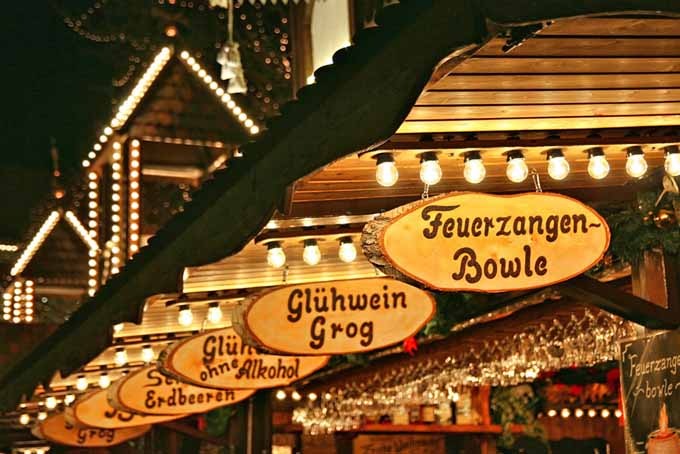
The Christmas markets and baroque structures in the city can rejuvenate any waning holiday cheer, and its steampunk street art provides an edgy mood boost.
At the age of eight, Christmas held an explosively thrilling allure, prompting me to drag my parents out of bed at 4 am. However, over my 32 years since, a mix of atheism, mounting credit card bills, and the intrusion of John Lewis-branded Venus flytrap monsters has left me more skeptical than enthusiastic about the holiday.
Yet, as I stroll through the Christmas markets of Dresden, my Scrooge-like demeanor slowly dissolves. Passing a man clad in an enormous polar bear costume near the grand baroque Frauenkirche building, I realize that while Finnish Lapland may be officially designated as Santa’s home, Dresden, nestled in the state of Saxony, southeast Germany, holds the title of Europe’s Christmas capital for many, thanks to its extensive network of outdoor Christmas markets.
Accompanied by the ambient sizzle of high-quality Thuringian sausages, these markets reject plastic trinkets in favor of meticulously crafted wooden toys. Opting for a steaming hot local brew over Coca-Cola is the preferred choice here, almost considered blasphemous otherwise. Instead of mince pies, slices of Dresdner Christstollen, adorned with raisins and almonds, are savored with sips of mulled wine.
I’ve arrived in Dresden (population 585,000) with the hope of rejuvenating my dwindling Christmas spirit, joining the millions who visit its Christmas markets each year. Following the inevitable Christmas comedown, my plan is to delve into Dresden’s more underground creative scene.
Embarking on my journey, I catch the 9.01 am Eurostar from St Pancras to Brussels Midi, followed by trains across Germany to Dresden via Frankfurt, totaling 12 hours. Fortunately, a new route to Dresden set to launch soon promises to make this trip more convenient. The European Sleeper, which commenced operations between Brussels and Berlin last May, will extend to Prague and Dresden starting March 25, 2024. It will run between Brussels Midi and Dresden Hauptbahnhof three times a week each way. This allows for a mid-afternoon Eurostar from London to Brussels, connecting with the European Sleeper at 7.22 pm, offering the chance to wake up in central Dresden at 8.29 am.
Anticipating indulgence in tooth-troubling treats later and having spent the previous day on trains, I opt for an early lunch at Brennnessel, a vegetarian restaurant near Hotel Indigo Dresden, my accommodation. The mildly spiced and delicious white carrot soup satisfies my hunger, and I observe the cozy restaurant filling up quickly, just after its 11 am opening.
A 15-minute stroll from Brennnessel leads me to Striezelmarkt, the crown jewel of Dresden’s Christmas markets. Located on Altmarkt (Old Market Square), reconstructed after the 1945 bombing by US and British forces that devastated much of Dresden, this market traces its origins back to 1434. Initially a one-day event for Dresden residents to procure meat for their Christmas feasts, local preferences appear to have shifted toward sweetness in the six centuries since. Today, many stalls showcase chocolate lollies and icing-dusted Dresdner Christstollen.
Passing a charming baking demonstration cottage where a young boy is trying his hand at flattening cookie dough, I come across a stall operated by Hoflößnitz winery. Situated just outside Dresden, the winery claims to have roots extending as far back as the Christmas market itself. While they offer hot plonk in mugs, I opt for kinderpunsch (thick, non-alcoholic Christmas punch), reminiscent of liquid apple crumble. It instantly supplants Quality Street orange creams as my quintessential Christmas flavor.
Pepperpot-sized wooden trolls rival hot drinks in abundance here. These heavily bearded trinkets populate every other stall, with bulbous-faced characters often brandishing pickaxes or headlamps. In the late 19th century, Dresden miners had to shift careers when local silver mines were depleted, turning to woodwork—a transition reflected in these handcrafted models, some fetching hundreds of euros.
While I do experience a touch of Christmas warmth at Striezelmarkt, largely thanks to the kinderpunsch, the price tags on some Dresdner Christstollens, reaching about €50, make me feel like the elves are attempting a festive mugging.
Acting on a local’s suggestion, I take a short walk to Mittelalter Weihnacht (Medieval Christmas) in Stallhof, once the site of the Royal Palace stables. The Renaissance-style buildings here were reconstructed after wartime bombing. Presently, stubbly men in peasant smocks vend beer horns, while blacksmiths forge hot metal for captivated onlookers capturing the scene on Instagram.
Continuing the historical theme, I attend a show at the nearby Semperoper. Initially constructed in 1841 by Hamburg-born architect Gottfried Semper for the Saxony royal family residing in the adjacent palace, the grand opera house has undergone multiple reconstructions. The current rendition, unveiled in 1985, still exudes pure 19th-century decadence with its velvet-cushioned interior.
Concerned that wearing a bow tie with my Primark suit may be slightly overdressed, I find reassurance in the theater bar where I encounter three women in grand period gowns enjoying their girls’ night out. The performance of “The Magic Flute,” featuring neon sets and extras donning acid trip animal masks, appears more Mighty Boosh than a baroque approved by royalty. Nevertheless, it’s refreshing to witness such modern visuals in this historic setting.



